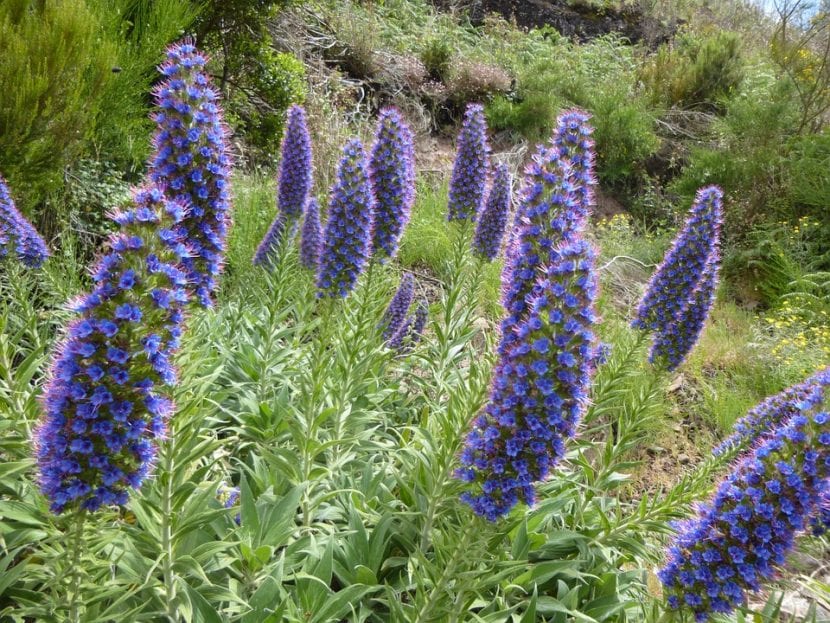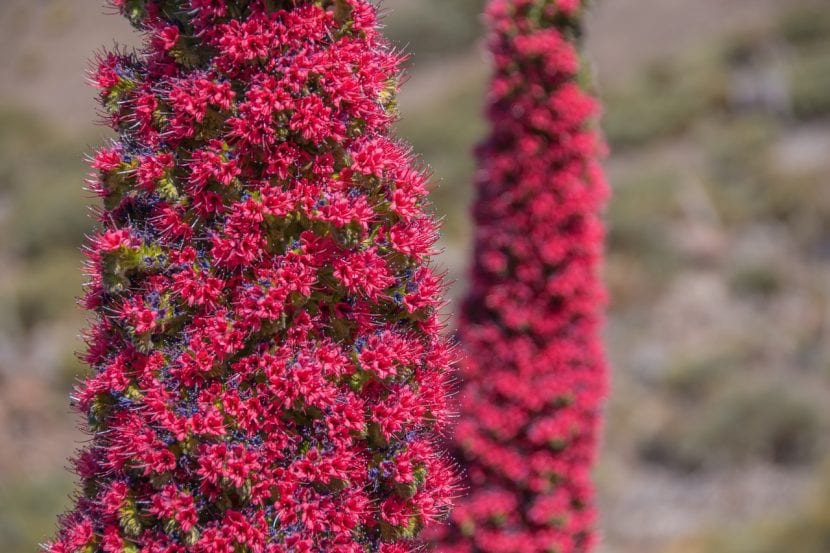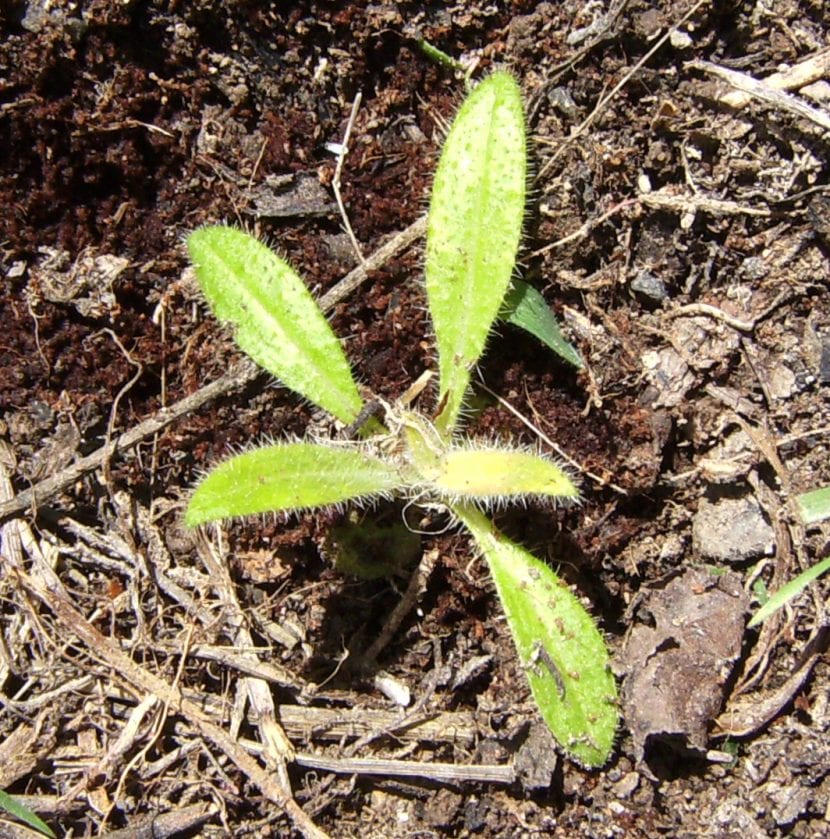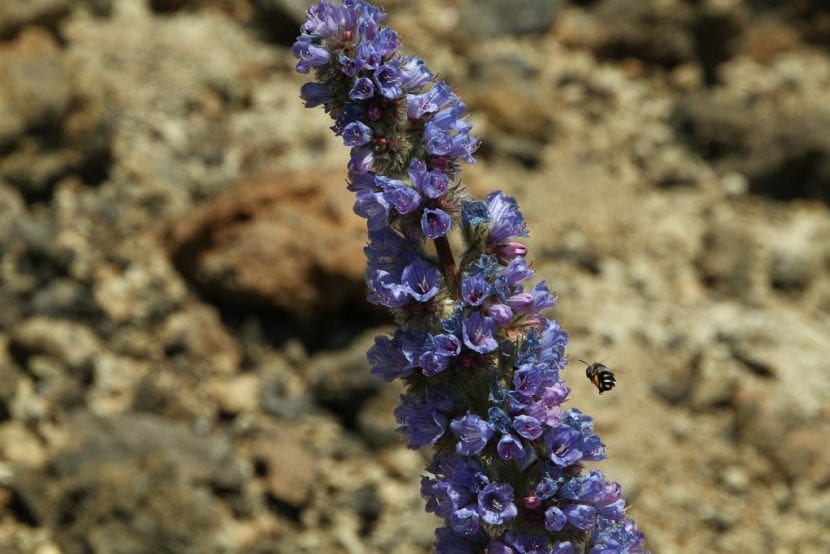
El tajinas It is a plant with an annual cycle, that is, it germinates, grows, produces flowers and seeds, and finally withers in two years. Despite its short life, it is a herbaceous plant with which you can have a perfectly decorated garden, as it produces a huge number of inflorescences.
It is a easy to care plant, very resistant to pests and diseases and, in addition, it looks great in any photo. Discover it. 😉
Origin and characteristics of the tajinaste

The tajinaste as such is the common name given to a dozen species of the genus Echium endemic to the Canary Islands. These species are:
- Echium wildpretti: known as red tajinaste. It is endemic to Tenerife and La Palma.
- Echium simplex: known as arrebol tajinaste or pride of Tenerife, where it is endemic.
- Echium callithyrsum: known as blue tajinaste from Gran Canaria. It grows in the humid areas of the north and northeast of the island.
- Echium decaisnei: known as white tajinaste. It is endemic to Gran Canaria, Lanzarote and Fuerteventura.
- Echium gentianoides: known as tajinaste azul de la cumbre. It is endemic to La Palma, where it grows at altitudes between 1800 and 2400 meters above sea level.
- Echium auberianum: known as blue or spicy tajinaste.
- Echium handiense: known as Jandía blue tajinaste. It is endemic to Fuerteventura, specifically to the south.
- Echium acanthocarpum: known as blue tajinaste of La Gomera, from where it is endemic.
- echium brevirame: known as white tajinaste. It is endemic to La Palma.
- Echium aculeatum: endemic to El Hierro, La Gomera and Tenerife.
- Echium Hierrense: known as tajinaste del Hierro, from where it is endemic.
- echium pininana: endemic to La Palma.
- Echium webbii: endemic to La Palma.
All species are characterized by growing to a height of up to 3 meters or 3 and a half meters, counting the inflorescence, which can measure from 1 to 3 meters. During the first year they produce a linear leaf rosette measuring 30 by 2cm, and during the second an inflorescence that can be blue, red or white in color sprouts.. The fruits are dry and indehiscent, that is, they do not open when ripe, inside which we will find the seeds.
What are their cares?
If you want to get a copy, we recommend providing the following care:
Location
This plant it has to be in a sunny exposure or in semi-shadow.
Earth
- Garden: must have very good drainage and be rich in organic matter.
- Flower pot: use a substrate composed of black peat mixed with perlite or river sand in equal parts.
Irrigation
Irrigation has to be moderate. During the summer it should be watered 3 to 4 times a week, while the rest of the year a maximum of twice a week will be sufficient.. In the case of having it in a pot with a plate underneath, especially during the coldest months of the year, we will have to remember to remove the excess water ten minutes after watering.
Subscriber
From early spring to late summer or early fall It must be paid with liquid fertilizers for flower plants that we will find for sale in ready-to-use nurseries following the instructions specified on the product's packaging.
Planting or transplanting time
The best time to plant it in the garden is in spring, when the risk of frost has passed. In case of having it in a pot, it should be transplant to a larger one when the roots come out of the drainage holes.
Multiplication

The tajinaste multiplies by seeds in spring. To do this, you have to follow this step by step:
- First, let's prepare the seedbed, which can be a seedling tray, flowerpots, glasses of yogurt, milk containers,… whatever comes to mind as long as it has holes for the water to drain, or that they can be made.
- Then, we fill it with universal growing substrate mixed with equal parts perlite.
- Then we place a maximum of three seeds in each seedbed, as far apart as we can.
- Next, we cover them with a thin layer of substrate and water.
- Finally, we place the seedbed in semi-shade.
In about 15-20 days the first ones will germinate, keeping the substrate moist but not flooded.
Plagues and diseases
It's very tough, but if we overdo it with irrigation, it may have fungi which can be tried to eliminate with fungicides. In addition, during the rainy season you have to be careful with snails If we have ventured to sow seeds, since these mollusks are very tender shoots, they will not hesitate to eat them.
Rusticity
It is able to resist frosts down to -3ºC as long as they are punctual and of short duration.
What is tajinaste used for?

This plant is used as an ornamental, either garden or to decorate the patio. It looks very good in any corner and, as we have seen, its cultivation and care are not difficult.
So if you would like to have one, do not hesitate: get some seeds and enjoy them watching them grow. 😉
Beautiful.
I totally agree 🙂